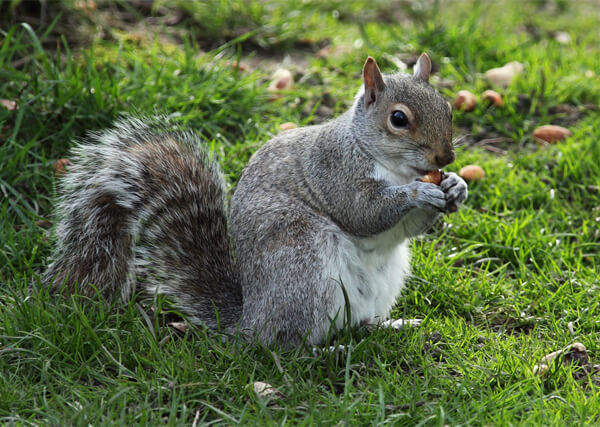Frequently Asked Questions (FAQ)
Contact Estate Wildlife Control Today
Call (603) 523-9284
Call (603) 523-9284
Below are some commonly asked questions about EWC as well as exclusions and removals in general.
All prices are dependent upon species, location, and scope of work to be done. Please call for a quote. Inspection fees are $100.00 and are dependent upon location.
Yes, only on exclusion work (except on mice) and it is for one year.
All animals removed or excluded are dealt with according to the laws of the state we are working in. Bats can be excluded only and only from August 15th to May 15th.
Working with bat and bird droppings – Common Hazards
Histoplasmosis is a lung infection caused by a fungus called Histoplasma capsulatum. The fungus can be found in soil contaminated with bird (especially pigeon) or bat droppings. Infection happens through inhaling the fungal spores. People with a weakened immune system such as the elderly, young children and people who have a medical condition that lowers their immunity are at highest risk for serious complications when infected.
Cryptococcosis is a lung disease caused by a fungus called Cryptococcosis neoformans. It is found in the environment, especially in soil that is contaminated with bird (particularly pigeon) droppings. People can be infected by inhaling the fungal spores. Cryptococcosis commonly causes tumors on the lungs or meningitis (an infection of the brain) but infection can also occur in other parts of the body. Infection is rare in people who are otherwise healthy but those with a weakened immune system are at increased risk.
Psittacosis is caused by bacteria called Chlamydia [or Chlamydophilia] psittaci. It is found in the droppings and respiratory secretions of infected birds, including parrots, pigeons and poultry. People can be infected by inhaling the bacteria. Psittacosis generally causes a mild to moderate respiratory illness with pneumonia, but more severe illness can occur. The elderly, young children, pregnant women and people who have a medical condition or are undergoing medical treatment that lowers immunity are most at risk.
Gastrointestinal illness – Bat and bird droppings can contain germs that cause gastrointestinal illness with symptoms of nausea, vomiting and diarrhea. People can be infected if they unintentionally swallow the germs, often through contaminated hands.
Ticks, mites and other parasites – Bat or bird roosts can harbor parasites that may invade buildings. Although these parasites can bite and irritate, they are unlikely to transmit diseases to humans. The northern fowl mite and chicken mite are usually the main culprits. Other parasites that may cause problems inside buildings include the pigeon nest bug and the bat bug (both related to the bed bug), soft ticks, biting lice and the pigeon fly. Although most parasites associated with bird or bat roosts die quickly after the birds or bats leave, some may live for several weeks.
Droppings, feathers, food and dead birds under a roosting area can breed flies, carpet beetles and other insects that may become major problems in the immediate area. These pests may fly through open windows or crawl through cracks to enter buildings. If birds or bats are discouraged from roosting around buildings, most of the parasites associated with them will soon die.
Have a question? Contact us!
Some of the Nuisance Wildlife We Remove

BAT EXCLUSIONS

BEAVER REMOVAL

SQUIRREL REMOVAL




